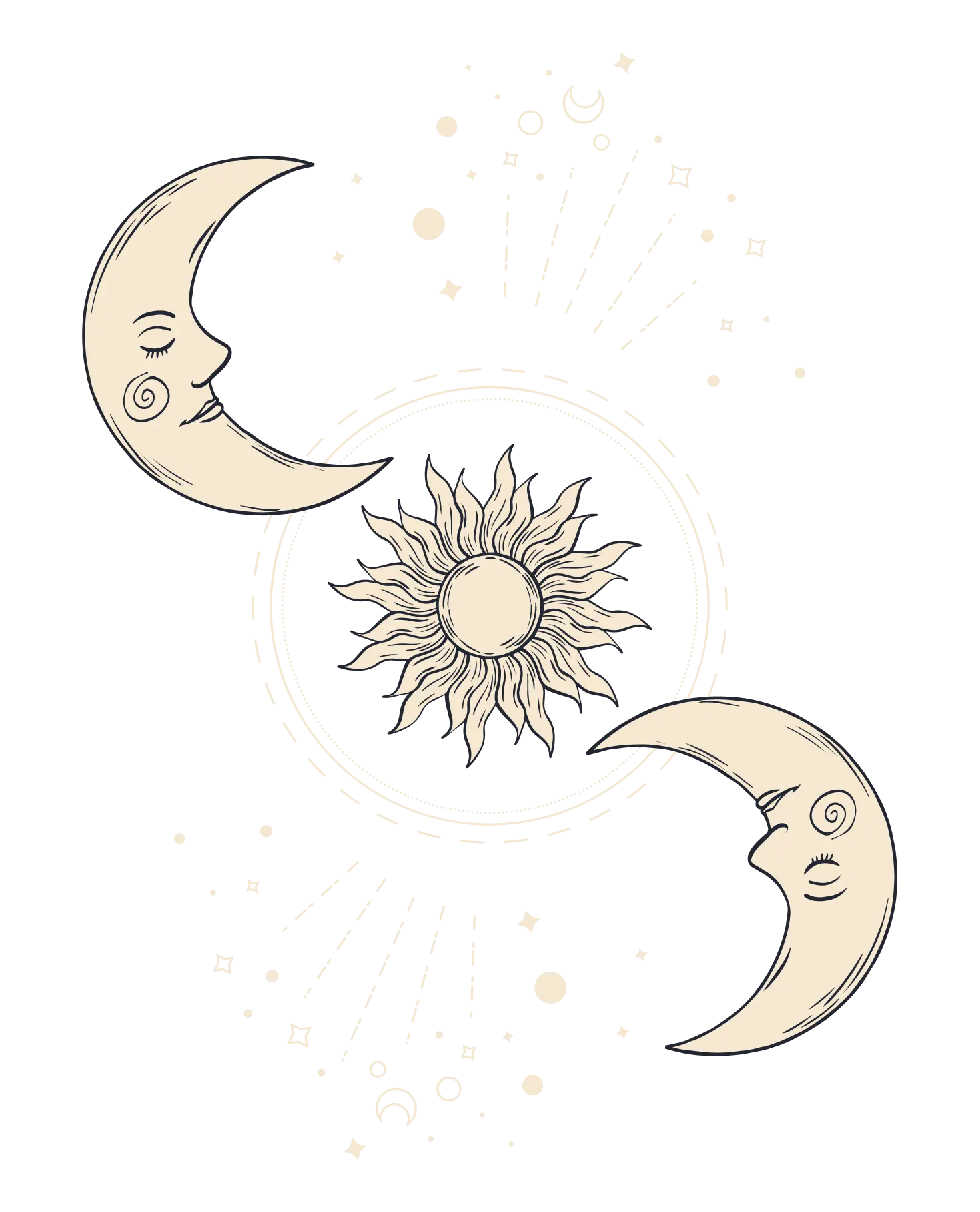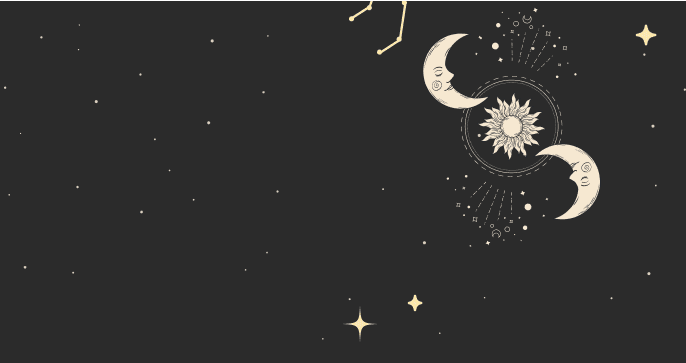The Story of the Seven Sisters
High in the night sky shines a cluster of stars known as the Pleiades.
To the naked eye, most people see six bright stars—but to cultures around the world, this shimmering collection represents seven sisters, goddesses, or celestial women pursued across the heavens. This powerful myth spans continents and millennia, appearing in the folklore, astronomy, and spirituality of peoples from Greece to Japan, from the Americas to Australia, and far beyond.
Though it may appear to be a simple tale of stars, the story of the Seven Sisters is one of humanity’s oldest, most universal myths—a tale passed down through oral traditions for tens of thousands of years, embedded in our collective memory like starlight itself.
In Greek mythology, the Pleiades were the seven daughters of the Titan Atlas and the sea-nymph Pleione. Their names were Maia, Electra, Taygete, Alcyone, Celaeno, Sterope, and Merope. After their father was condemned to hold up the sky, the sisters were pursued relentlessly by the hunter Orion. To protect them, Zeus transformed the sisters into stars and placed them in the heavens. But Orion was also placed in the stars—and so the eternal celestial chase began, with Orion following the sisters across the sky forever.
This myth introduces a core motif that repeats globally: the pursuit of the sisters by a male figure, often a hunter, spirit, or star, forming a chase across the cosmos.
Despite the tale of seven sisters, only six stars are easily visible to the unaided eye in modern times. This discrepancy is also echoed in myths across cultures. In some versions, one of the sisters hides in shame, often Merope—who married a mortal and dimmed her light. In other cultures, one of the sisters was lost, stolen, killed, or hidden.
Astronomically, it’s believed that the cluster once had seven brighter stars, but gravitational changes, stellar motion, or the dimming of one of the stars (possibly Pleione or Celaeno) may have made it no longer visible to casual observers.
This missing sister phenomenon is central to the story and is referenced in myths from Africa to Asia to the Americas, a remarkable example of a shared global mystery.
In Aboriginal Australian culture, the Pleiades feature prominently in Dreamtime stories—the foundational spiritual narratives of creation and ancestral law. These stories exist across many Aboriginal language groups and are among the oldest continuously told stories in the world.
One widely told Dreamtime tale speaks of seven ancestral sisters being pursued by a male figure, often referred to as Wati Nyiru. He is enchanted by the sisters and chases them across the land, sky, and spirit world. In their efforts to escape, the sisters use magic, transform into animals, and finally ascend to the stars to remain safe from his pursuit. Their path is mapped in sacred songlines, which connect spiritual and geographic features across the continent.
Dreamtime stories vary from region to region, but the essence of the sisters’ escape and eternal presence in the stars remains remarkably consistent. These stories are depicted in ancient rock art, sand drawings, dances, and oral traditions that have survived for over 65,000 years—some of the most enduring cultural expressions on Earth.
Among the Lakota Sioux, the Pleiades are known as the Seven Sisters, linked to the legend of a bear chase. Seven maidens fleeing a bear climbed a rock that rose to the heavens, forming the Devils Tower in Wyoming and eventually becoming stars.
The Navajo call the cluster Dilyéhé, associated with protection and sacred direction. The Iroquois tell of seven boys who danced so much they floated into the sky, turning into stars. In many cases, one child or sister is lost or left behind, echoing the missing star motif.
These tales often intertwine survival, family, warning, and transformation—core themes in Indigenous storytelling and cosmology.
In Japanese mythology, the Pleiades are known as Subaru, meaning “to unite” or “cluster.” The constellation is seen as a group of celestial beings—sisters, spirits, or even ancestral souls. The Subaru automobile logo depicts six stars, reflecting the visibility of six Pleiades and honoring the ancient myth.
The story of Subaru in Japanese culture, though not always about fleeing sisters, often represents connection, unity, and transformation, themes reflected in spiritual traditions like Shinto and the seasonal cycles of nature.
In Hindu mythology, the Pleiades are called the Krittikas, six nursemaid goddesses who raised the war god Kartikeya (Murugan). Each star represents one of the nurturing goddesses, and their care led to Kartikeya’s triumph over evil.
A seventh sister, often associated with the star Alcyone, is occasionally left out of the story or described as being removed—again reinforcing the recurring motif of the lost star. The Krittikas are deeply tied to agricultural calendars and ritual fire, further cementing their cosmic and earthly significance.
In Chinese astronomy, the Pleiades are part of the White Tiger of the West, known as Mao (the Hairy Head) in the 28 lunar mansions. Rather than personified sisters, the stars mark an auspicious seasonal sign and are tied to autumn, war, and transformation.
The first recorded history of the Pleiades in Chinese culture appears as early as 2357 BCE, making it one of the earliest known references to the cluster in human record. These ancient star maps aligned constellations with imperial rituals and agricultural calendars.
Though the celestial chase isn’t prominent in this version, the recognition of the cluster’s significance is still key—linked to fate, protection, and ancestral guidance.
In African cultures, including the Khoisan of southern Africa, the Pleiades are associated with girls being hunted, again reflecting the celestial chase. In Zulu tradition, the cluster is called iSilimela, marking planting season and symbolizing fertility and rebirth.
While ancient Egyptian mythology focused more on Orion (associated with Osiris) and Sirius (linked to the goddess Isis), scholars suggest the Pleiades may have been symbolically linked to the Seven Hathors—goddesses often depicted as a group of women who foretell fate, connected to the cow goddess Hathor and sometimes shown as a cluster of seven cows and a bull in the sky.
Throughout Celtic, Norse, and Slavic traditions, the Pleiades were seen as spirit maidens, seasonal heralds, or guides of the dead. In Gaelic folklore, they were known as An T-Seachdar, “The Seven,” tied to Samhain and the thinning of the veil.
In Slavic lore, they were known as the “Hen with her Chicks,” seen as a protective mother figure guiding souls. Medieval European star maps often depicted the cluster with female figures or angels, reinforcing their spiritual power.
One of the earliest artistic depictions of the Pleiades may come from Germany, where the Nebra Sky Disk, dated to around 1600 BCE, shows a cluster of seven dots widely believed to represent the Pleiades. This artifact offers one of the earliest visual records of human celestial observation—and possibly one of the first written representations of the Seven Sisters.
Across nearly all versions of the myth, there is a pursuer—a hunter, man, or beast—chasing the sisters. This celestial chase mirrors human experiences: unwanted desire, protection, escape, transformation. Orion, the Greek hunter, is reflected in Wati Nyiru of Australia, the bear in Native stories, or the male gaze in symbolic terms.
This pursuit encodes gender roles, power dynamics, and initiation themes, with the sisters often representing innocence, freedom, or divine wisdom—fleeing from domination, yet immortalized in the sky.
The myth of the Seven Sisters may be the oldest continually told story in human history. Scholars theorize that it originated over 100,000 years ago, perhaps as early as when Homo sapiens were still in Africa. As humans migrated out of Africa, they may have carried this myth with them—spreading it across Asia, Europe, and eventually to the Americas and Australia.
Two dominant theories explain how this myth traveled and endured:
1. Single-Origin Theory: The myth began in one place—likely prehistoric Africa—and spread globally with migrating humans. As people settled in different regions, the story adapted to local landscapes and languages but retained its core themes.
2. Convergent Evolution Theory: Cultures created similar myths independently because of shared environmental triggers—most notably, the visibility of the Pleiades and the cultural importance of stars for agriculture and timekeeping.
Regardless of which theory holds true, the persistence of the story is astonishing. Ancient cave art in Lascaux, France, dating back 17,000 years, shows a bull with a cluster of dots above its shoulder, believed to represent Taurus and the Pleiades—a testament to how long this story has lived in our minds.
The story of the Seven Sisters endures because it speaks to something eternal within us. Themes of escape, longing, cosmic order, sisterhood, and fate resonate across cultures and generations. The stars themselves are visible worldwide, making them a universal reference point in the sky.
Carl Jung’s theory of collective unconscious suggests that some symbols, like the Seven Sisters, live deep in the human psyche as archetypes—passed on not just through words, but through symbols, dreams, and mythic memory.
Even now, the myth remains alive:
• In spiritual circles, the Pleiades are associated with divine feminine energy, higher consciousness, and celestial wisdom.
• In popular culture, references appear in literature, branding (Subaru), and television.
• In science, the cluster is still studied, used for navigation, and referenced in NASA star mapping.
• In Indigenous activism, traditional sky stories are being revived to teach cultural identity, language, and sustainability.
The Seven Sisters continue to shine—not just as stars, but as symbols of humanity’s oldest dreams and stories. We look up and still see them: six stars dancing, one in hiding, and a cosmic chase that has never ended.
Comments


Discover more fascinating insights and stay updated on all lunar events in the MoonX app.
Popular questions
EVERYDAY WELLBEING
Start Your Guided Cosmic
Journey with MoonX
Build out your own personalized spiritual practices with MoonX today
compatibilityhoroscopebirth chartmediate sleephealing soundjournaltarotgratitudereduce stress